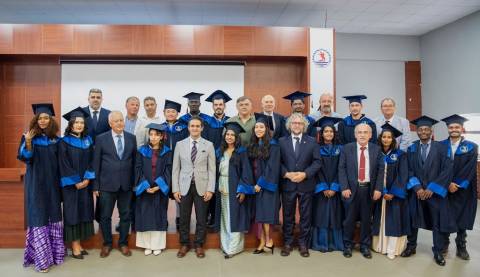OMU Developing Chestnut Varieties Resistant to Chestnut Blight and Gall Wasp Infestation
At Ondokuz Mayıs University (OMU) Ali Nihat Gökyiğit Research Station, hybrid chestnut species resistant to chestnut blight and pests are being developed.
OMU Faculty of Agriculture academic staff member Prof. Dr. Ümit Serdar provided information about major threats affecting chestnut production and yield—such as chestnut blight, root rot, and gall wasp infestation—during a program held at the Ali Nihat Gökyiğit Research Station.
“We Have Registered These Varieties for Standard Sapling Production”
Stating that for the past 15 years they have been working on developing high-yield, high-quality chestnut varieties that are resistant to diseases and pests, and identifying cultivation techniques suitable for the region, Prof. Dr. Serdar said:
“We are experimenting with both our native Anatolian chestnut species (Castanea sativa) and the more resistant Chinese and Japanese chestnut species, along with their hybrids with Castanea sativa. As part of these efforts, we have developed four varieties so far: Akgüz, Ali Nihat, Betizak, and Marigoule. These are resistant types. Betizak is actually registered in France, but we have also registered it in Türkiye for the production of standard saplings.”
Prof. Dr. Serdar also noted that the complex hybrid species suffered damage due to spring frosts this year:
“The Betizak and Marigoule varieties produced excellent chestnuts. On the other hand, one of our new candidate varieties, named A55, was unaffected by this year’s frost event. While we are developing chestnut varieties, we are also investigating which rootstocks are most compatible for grafting with these varieties. Our students are conducting measurements and weighing the samples today. Based on these investigations, we will make recommendations for the region on which variety is best, which rootstock it should be grafted onto, and the ideal in-row and inter-row planting distances for each rootstock-variety combination.”
“Our Goal is to Serve the Region and Turkish Agriculture”
OMU Faculty of Agriculture Dean Prof. Dr. Muharrem Özcan also noted that different chestnut types are grown at the Ali Nihat Gökyiğit Research Station and that harvest time has arrived. He said:
“This project is a continuation of the long-standing research conducted by our faculty on chestnuts, one of the region’s main agricultural products. There are different chestnut varieties being studied in terms of rootstock-scion combinations, yield, quality, and resistance to disease progression. Our ultimate goal is to serve the region and contribute to Turkish agriculture.”


















